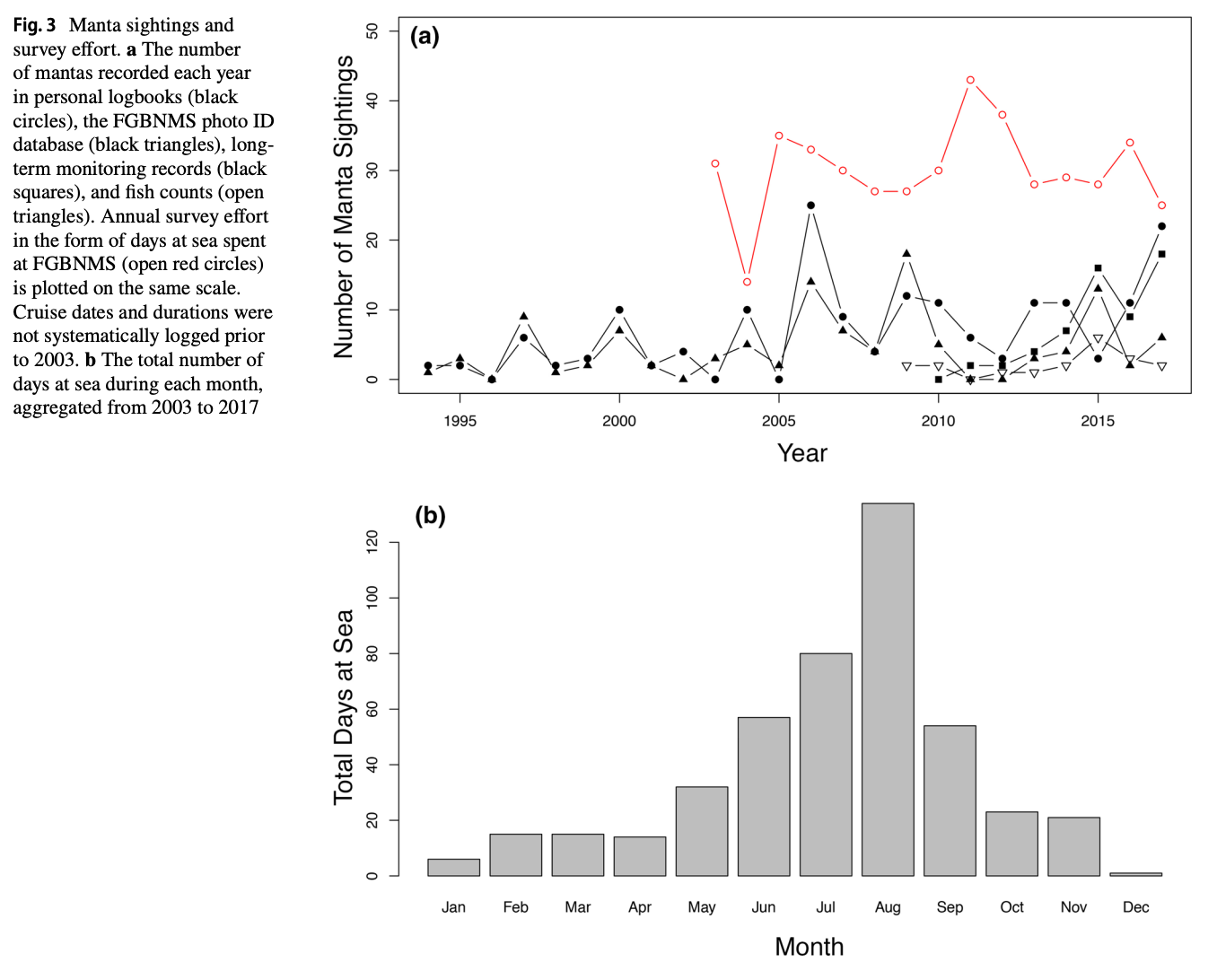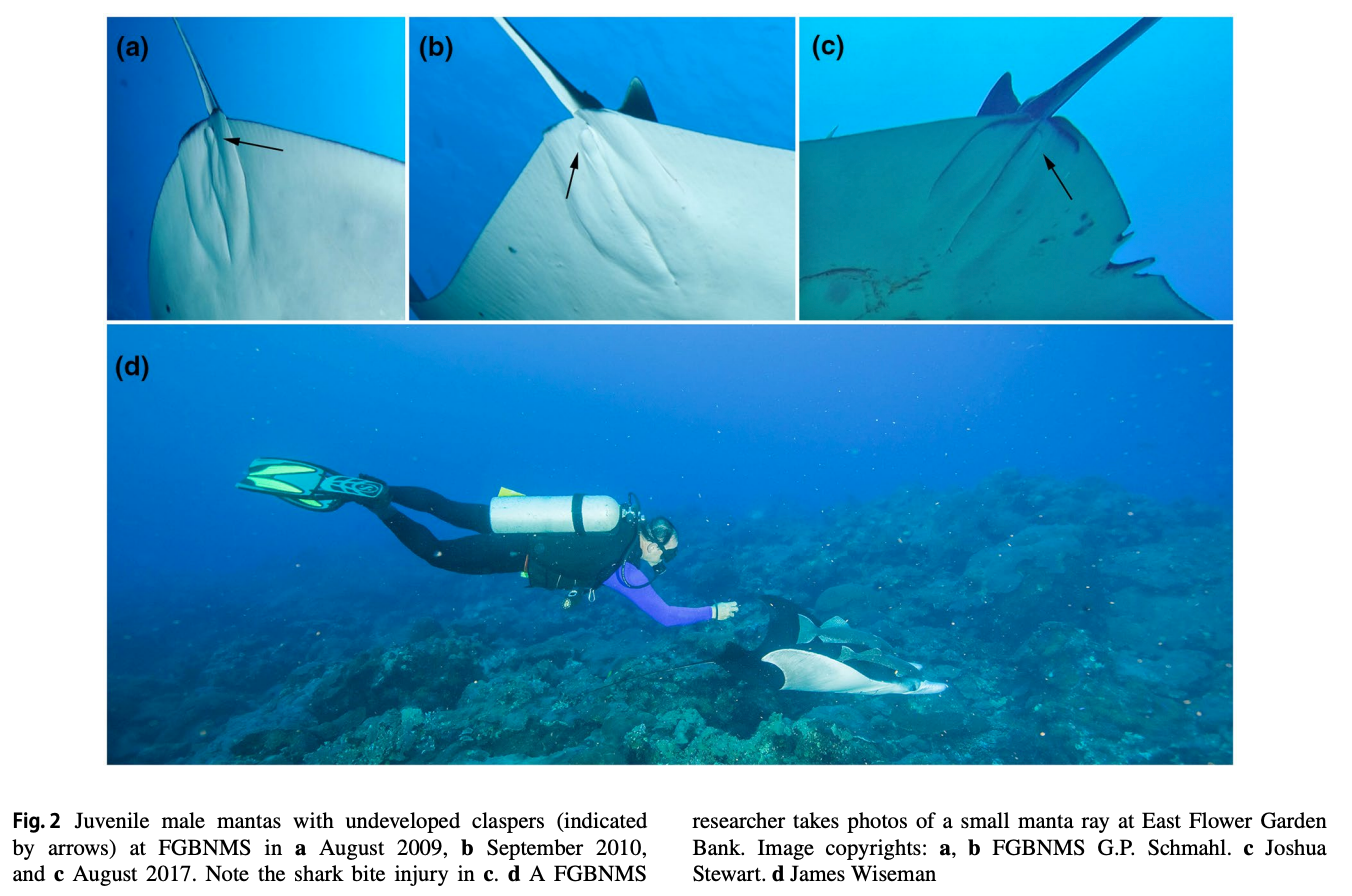Important juvenile manta ray habitat at Flower Garden Banks National Marine Sanctuary in the northwestern Gulf of Mexico
July 2018
Joshua D. Stewart, Marissa Nuttall, Emma L. Hickerson & Michelle A. Johnston



Summary: Oceanic manta rays (Mobula birostris) face global threats from fisheries and bycatch, but significant knowledge gaps persist in their biology, ecology, and life history. This study suggests that Flower Garden Banks National Marine Sanctuary (FGBNMS) serves as an important habitat for juvenile mantas. Genetic evidence indicates the presence of both oceanic mantas and a potential third manta species (Mobula cf. birostris) at FGBNMS. Size estimates and photographic records reveal that a majority of mantas observed at FGBNMS are smaller than the size at maturity for both M. birostris and reef manta rays (M. alfredi). This suggests that FGBNMS may serve as a nursery habitat for these species, emphasising the need for further research on their importance and long-term habitat use patterns.
Abstract
“Oceanic manta rays (Mobula birostris) are large pelagic planktivores that are threatened globally by targeted fisheries and bycatch. While studies of oceanic mantas have increased substantially in the past decade, major knowledge gaps remain in their basic biology, ecology and life history. The juvenile stage in particular is virtually unstudied, as juvenile oceanic mantas are rarely observed in the wild and are known primarily from fisheries and captive individuals. Here, we present evidence suggesting that Flower Garden Banks National Marine Sanctuary (FGBNMS) is an important habitat for juvenile manta rays. Recent genetic evidence indicates that both oceanic mantas and a proposed third manta species (Mobula cf. birostris) are present at FGBNMS. Size estimates of mantas sighted at FGBNMS over 25 years of monitoring efforts indicate that 95% of individuals are smaller than the size at maturity for male M. birostris, and 80% are smaller than the size at maturity for M. alfredi. Photographic records of juvenile males with undeveloped claspers further corroborate these findings. Temporal patterns of use and the prevalence of juveniles suggest that this region may serve as nursery habitat for M. birostris and M. cf. birostris. Further research is necessary to determine the importance of the region to juveniles of each species, as well as long-term patterns of habitat use and residency.”
Author Affiliations
Scripps Institution of Oceanography, University of California San Diego
The Manta Trust
NOAA Flower Garden Banks National Marine Sanctuary
CPC
Funded by
NOAA ONMS Nancy Foster Scholarship
